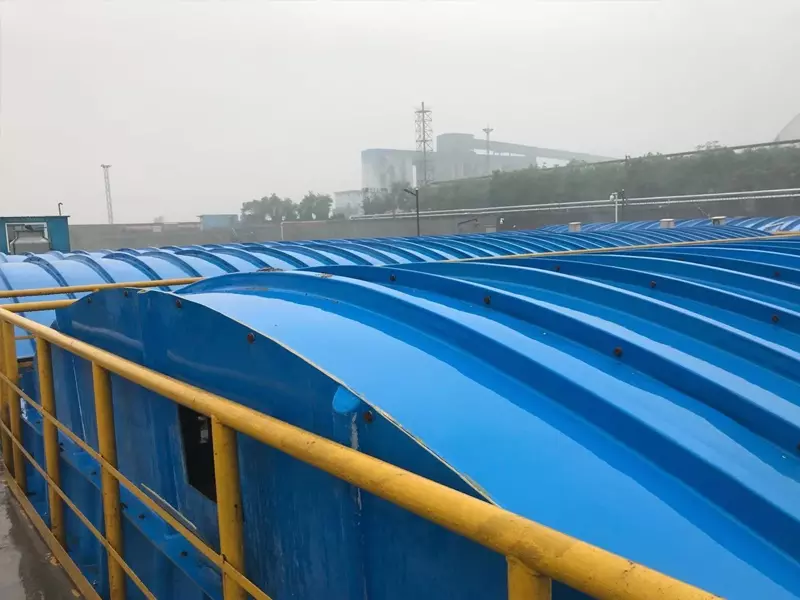What are the components of furniture factory exhaust fumes and how should they be treated?
◆ Furniture exhaust gas treatment exhaust gas analysis ◆
>>The source of furniture exhaust gas
The main sources of exhaust gas in furniture factories are twofold. Firstly, it comes from the extensive use of adhesives, which produce a large amount of formaldehyde; Secondly, a large amount of toxic and harmful gases are generated during the process of spray painting and coating. These waste gases are mainly organic waste gases of harmful substances such as benzene, aldehydes, ketones, and amines, which are flammable and can easily cause fires, posing a threat to personal safety and property.

>>Composition of furniture exhaust gas
The exhaust gas from furniture factories is generated during the painting process, mainly composed of benzene, toluene, xylene, formaldehyde, etc. These exhaust gases not only pollute the environment, but also enter the human body through the respiratory tract, which may cause fainting, disgust and other symptoms. In more serious cases, it can also lead to obstructive anemia, posing a serious threat to the physical and mental health of workers. So the treatment of exhaust gas in furniture factories is very important.
>>Characteristics of furniture exhaust gas
The VOCs emissions during the furniture manufacturing process mainly have the following characteristics:
(1) VOCs emissions are related to the type of coating used. When coating the same area, oil-based coatings produce more VOCs, followed by water-based coatings, and powder coatings produce less. The manufacturing process of wooden furniture generally uses oil-based coatings, mainly including polyurethane coatings, nitro coatings, and alkyd coatings.
(2) VOCs emissions are related to coating technology. When coating the same area, air spraying technology produces more VOCs, while electrostatic spraying and brush coating processes produce less VOCs.
(3) The oil-based coatings commonly used in the manufacturing process of wooden furniture mainly include polyurethane coatings, nitro coatings, and alkyd coatings. The use of air spraying method requires multiple primer and topcoat operations on furniture during the manufacturing process. Various types of coatings are used with large amounts, and the types and emissions of VOCs rank first in the furniture manufacturing industry.
(4) Soft furniture is mainly made of elastic and soft materials, while the bending, handrails, and footrests of furniture are mainly made of wood. During the production process, primer and topcoat are also required. The painting process is the same as that of wooden furniture, but the use of paint and VOC emissions are less than those of wooden furniture.
(5) Metal furniture can be divided into electroplated furniture and baked paint furniture, and the types of coatings used include liquid coatings and solid powder coatings. The coating process can use air spraying and electrostatic spraying.
(6) Plastic furniture, bamboo and rattan furniture, and glass furniture produce minimal VOCs and pollution during the manufacturing process.
(7) Many furniture manufacturing companies have a wide range of product types, and correspondingly use a variety of coating types, resulting in the types and emissions of VOCs that are not always stable, but change with the variation of product types.
(8) During the painting process, the types and emissions of VOCs generated by different painting procedures may vary
◆ Furniture exhaust gas treatment system design ◆
>>The treatment of VOCs waste gas from painting in furniture manufacturing industry can be divided into two ways: prevention and treatment:
1、 Prevention "mainly refers to source control, that is, by increasing the proportion of environmentally friendly coatings (water-based coatings or powder coatings) with low organic solvent content, improving coating technology (rotary cup electrostatic spraying, air atomization electrostatic spraying, brush coating, roller coating, etc.), developing intelligent coating testing lines, fully sealing coating workshops, and other methods to reduce VOCs generation.
2、 'Treatment' mainly refers to the collection and purification of VOCs waste gas generated during the coating production process. At present, the widely used VOCs emission control technologies in the market mainly include absorption methods, adsorption methods, and control technologies combining absorption and adsorption methods.
(1) Absorption method
Absorption method, which uses water to capture paint aerosols (paint mist) formed during the painting process. Its working principle is: under the action of the suction force of the exhaust fan, air containing paint mist flows towards the inner wall of the water curtain plate of the water curtain machine. Some of the paint mist directly contacts the water film on the water curtain plate and is adsorbed, while others are washed away by the water curtain when passing through it. The remaining paint mist that is not captured by the water film and water curtain is washed away when passing through the washing and cleaning areas.
It should be pointed out that the paint mist treatment device installed in the water curtain machine can only treat the resin components in the paint mist. For organic solvents in vapor state, they are difficult to dissolve in water and cannot be effectively treated. Therefore, other waste gas treatment equipment needs to be combined for treatment.
(2) Adsorption method
The main devices used are activated carbon adsorption devices or filter adsorption methods with adsorption cotton. Their working principle is to collect polluted air from the workshop using a wind capture device, remove pollutants from the air through adsorbents such as activated carbon or adsorption cotton, and directly discharge them.
(3) Absorption adsorption combination
The main device is a water curtain cabinet+activated carbon adsorption box. The combination of absorption and adsorption methods refers to the installation of an adsorption device after the absorption method, which can not only avoid aerosol clogging of the adsorbent, but also effectively remove organic solvents in vapor state.
At present, some wooden furniture manufacturing enterprises adopt this method, but it has significant drawbacks. The polluted air after passing through the water curtain machine has a high moisture content, and the adsorbent cannot be fully utilized.
